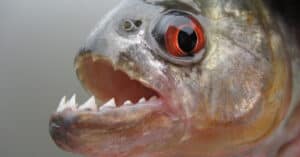A piranha is a diverse species of fish from the Serrasalmidae family or a member of the subfamily Serrasalminae. It’s a freshwater fish that lives in lakes, floodplains, reservoirs, and South American rivers.
The piranha is one of the world’s most misunderstood fish species after the shark. They are not so cute and enticing, but they are also not what we already think. There are a lot of movies about piranhas that have damaged their reputation. Just look at the 2010 remake where a pack of piranhas devours humans in 3D detail.
In the 1978 cut film Piranha, the prehistoric piranhas escape from a military experiment and feast on the unsuspecting lake swimmers. Since then, everyone started seeing piranhas as the notorious fish with sharp teeth, ferocity, and outsized appetites.
Although piranhas are often described as highly predatory species, their dietary needs vary extensively. In hopes of shedding more light on these misinterpreted fish species, this article outlines ten incredible facts about piranhas.
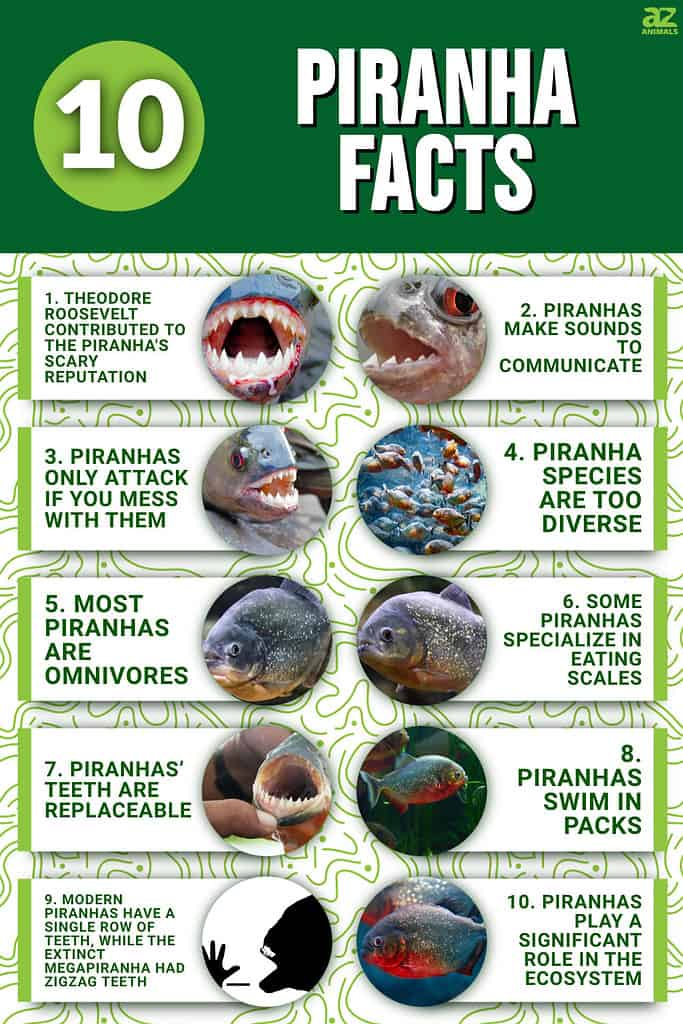
1. Theodore Roosevelt Contributed to the Piranha’s Scary Reputation

Former US President Theodore Roosevelt claimed that piranhas are the most vicious fish in the world.
©The Jungle Explorer/Shutterstock.com
When former US President Theodore Roosevelt journeyed to the River Doubt in the Amazon, he encountered several exotic creatures, including piranhas. The piranha seemed to make a strong impression on the former president, who described it as a “bloody-crazy fish” and “the embodiment of evil ferocity.” Roosevelt recounted his adventures and calamities in his 1914 book, “Through the Brazilian Wilderness.”
“They are the most vicious fish in the world.” They will snap a finger off a hand incautiously trailing in the water. They mutilate swimmers—some men have already been mutilated in every river town in Paraguay. They will devour any wounded man or beast alive, for blood in the water excites them to madness. They will tear wounded fowl to pieces and bite off the tails of big fish as they grow exhausted when fighting after being hooked.
Even worse, Roosevelt recounted a tale of a pack of piranhas devouring a whole cow. According to Mental Floss, the locals extended a net across the river to catch piranhas, then stored the fish in a tank without food, and later tossed a dead cow into the river together with the fish for Roosevelt to see piranhas devour it. In reality, the locals had put on a show for Roosevelt before he arrived.
2. Piranhas Make Sounds to Communicate

Piranhas make short, percussive drum-like sounds when fighting for food or circling an opponent.
©guentermanaus/Shutterstock.com
Piranhas make a lot of barking noises when they enter into a confrontation. Researchers suspect that these barking sounds are a way they can issue a threat—red-bellied piranhas bark in the hands of anglers who catch them. Piranhas also make short, percussive drum-like sounds when fighting for food or circling an opponent. They also produce a softer croaking sound when their jaws snap at each other.
3. Piranhas Only Attack if You Mess With Them
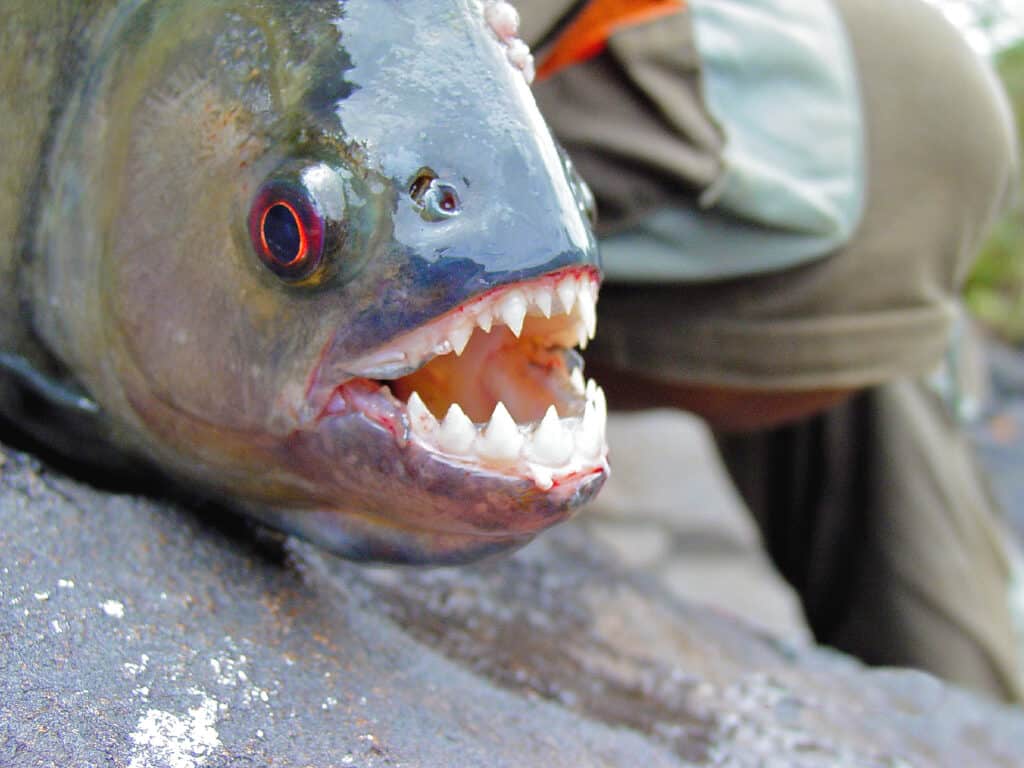
Many South American swimmers usually emerge from the piranha-infested waters unharmed, even with the Amazon Black Piranha around, which is considered one of the more dangerous species.
©The Jungle Explorer/Shutterstock.com
Despite a reputation for attacking, piranha attacks on humans are rare. Piranhas will only attack if provoked, like sharks, wolves, and grizzly bears. Many South American swimmers usually emerge from the piranha-infested waters unharmed.
The danger comes when the water level is low, and the prey is scarce, then you disturb the spawn buried in the riverbed. Piranhas become more aggressive either because they are hungry or threatened.
There are a few documented cases of piranhas having consumed humans—at least three of those cases involved people who had already died from other causes like drowning.
4. Piranha Species are Too Diverse

It is thought that there are over 60 species of piranha but the exact number is unknown.
©Andrei Armiagov/Shutterstock.com
The exact number of piranha species is unknown. However, estimates range between 30-60 or more species of piranha, which are all native to lakes and rivers in South America. From a systematic perspective, researchers claim that grouping piranhas have been quite challenging due to problems in identification, linking juveniles with adults, and unraveling their evolutionary histories.
5. Most Piranhas are Omnivores
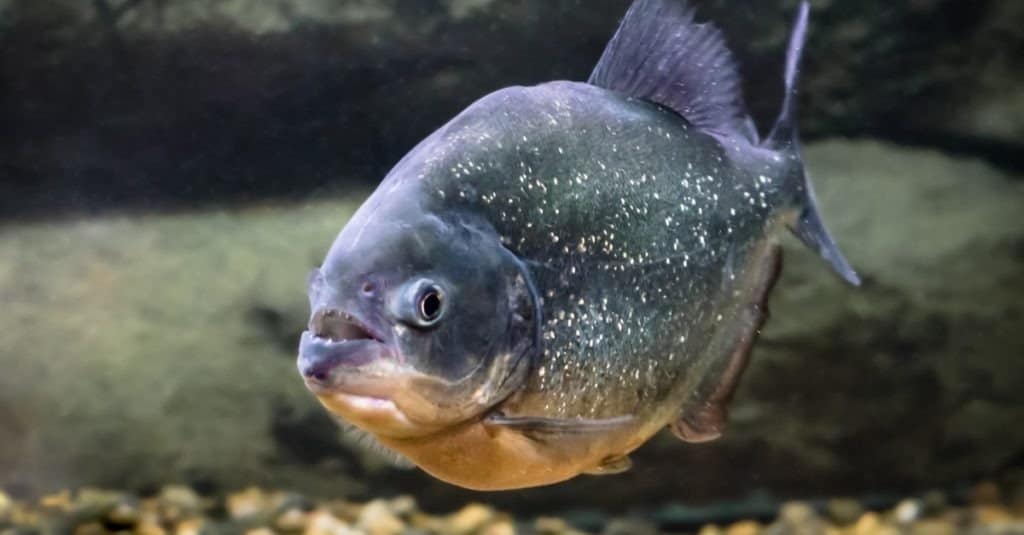
Young piranhas eat insects, crustaceans, and copepods.
©ChocoPie/Shutterstock.com
Most adult piranhas, depending on the species, eat snakes, fish, bird fragments, and small mammals. Some species, like the black and red-bellied piranhas, cannot resist eating leaves or figs. Other piranhas feed primarily on seeds and nuts. Young piranhas eat insects, crustaceans, and copepods. Therefore, piranhas are generally omnivores since they feed on plants and animals.
6. Some Piranhas Specialize in Eating Scales
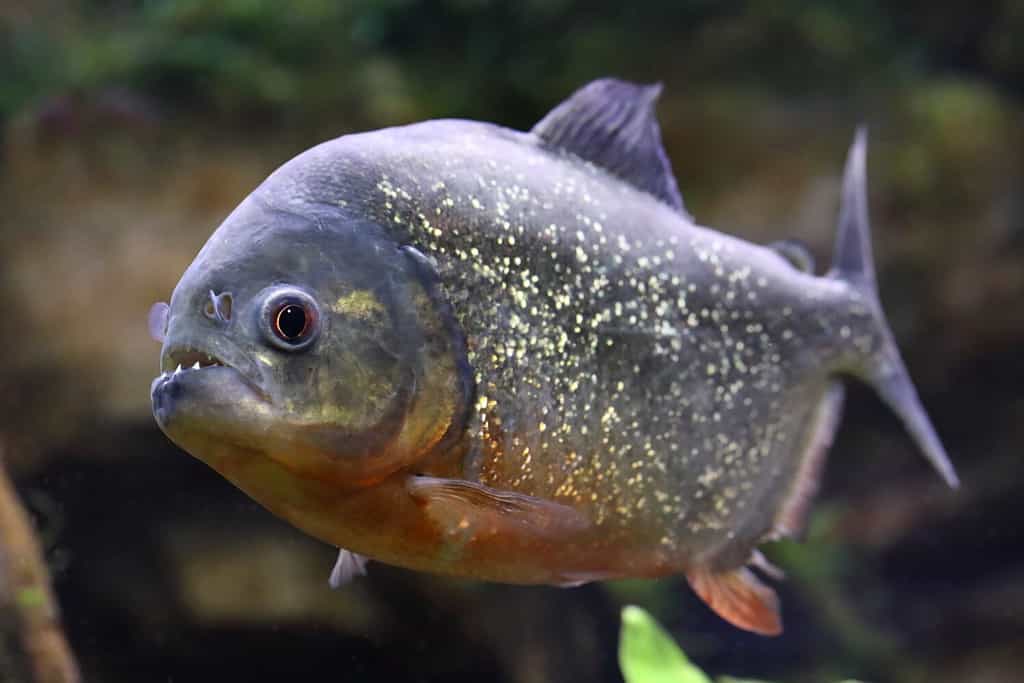
Biologists often refer to this fish as an opportunistic carnivore.
©Grigorii Pisotsckii/Shutterstock.com
Opportunistic piranhas can repeatedly pluck scales off the same victim for many years without killing it. Scales often grow back. In other words, they are a renewable source of food for piranhas. Some species, like the wimple piranha (Catoprion mento), are specialist scale eaters that have adapted to feed primarily on the scales of other fish.
7. Piranhas’ Teeth are Replaceable
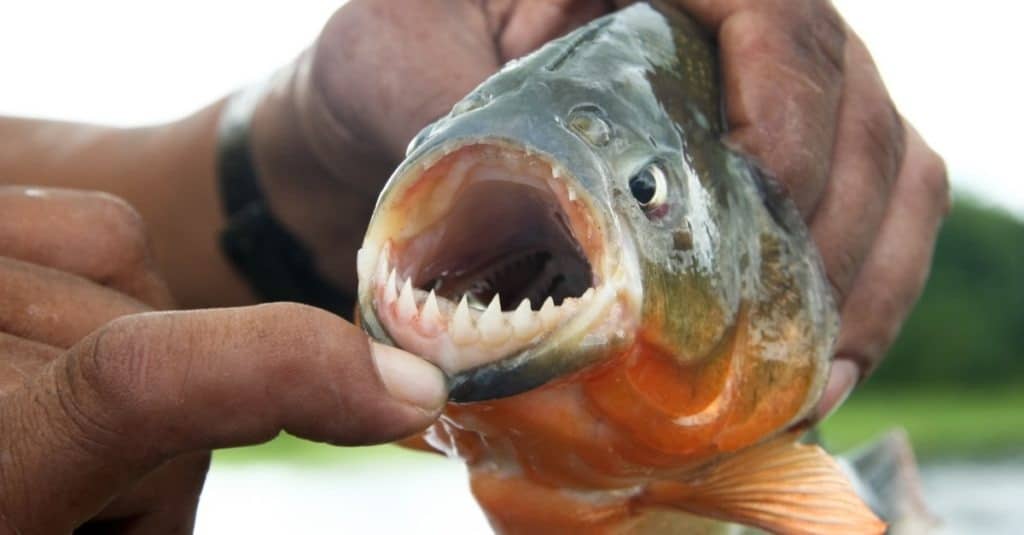
Piranhas lose all teeth on one side of the face at a time – both lower and upper jaws – and regrow them.
©Alberto Loyo/Shutterstock.com
Piranha’s razor-sharp teeth are pretty intense and replaceable. They often lose their teeth throughout their lifetime but will replace them the same way sharks do. Piranhas replace teeth in quarters multiple times throughout their lifespan, while sharks are capable of replacing their teeth 50 times throughout their lifetime.
Piranha’s teeth form a solid battery that is locked together, allowing the piranha to slice through bones, meat, vegetation, and even metal. For that reason, they lose all teeth on one side of the face at a time – both lower and upper jaws – and regrow them.
8. Piranhas Swim in Packs

Piranhas swim in shoals for safety reasons.
©Ewa Studio/Shutterstock.com
Piranhas swim in shoals for safety reasons, not for hunting, though it may seem like a good hunting technique since more piranhas can easily take down a larger foe. Piranhas are preyed on by river dolphins, birds, caimans, and other large pescatarian fish. So, traveling in a group protects them from attack by these predators.
9. Modern Piranhas Have a Single Row of Teeth, While the Extinct Megapiranha had Zigzag Teeth
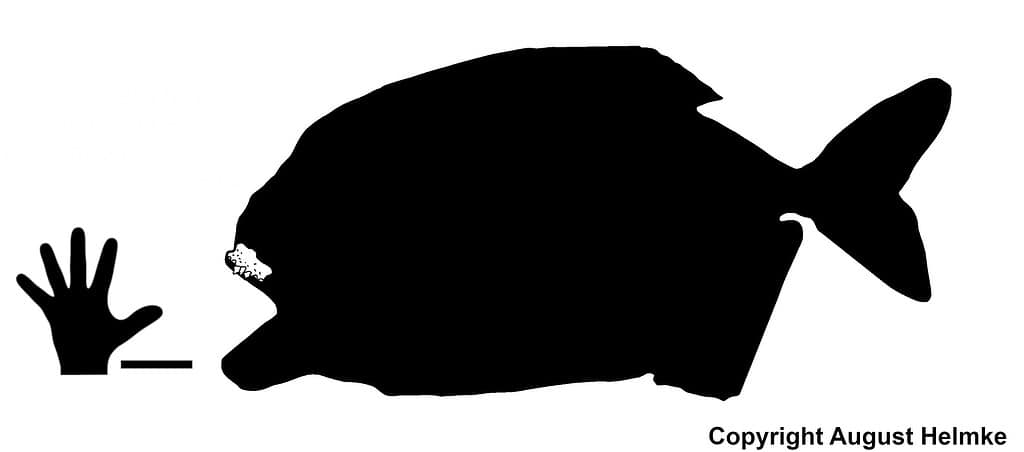
©Augustios Paleo, CC BY-SA 4.0 – License
Adult modern piranhas have a single row of interlocking teeth lining the jaw, while their closest living relatives, the pacus, have two rows of flatter teeth. True piranhas have tricuspid teeth with a more pronounced middle crown, about 4 mm tall.
According to research published in the Journal of Vertebrate Palaeontology, the piranha’s last common ancestor, the Megapiranha paranensis, had a row of zigzag teeth. Megapirahna was slightly larger than modern piranhas, with powerful jaws and an estimated length of about 3 feet.
10. Piranhas Play a Significant Role in the Ecosystem

Red-bellied piranhas are classified as carnivorous omnivores.
©Tatiana Belova/Shutterstock.com
Piranhas play a valuable role in the ecosystem as predators, prey, or scavengers. Their presence in the water bodies affects the distribution of other fish and wildlife species. Piranhas are also an essential source of food for other predators, including the caiman, cormorants, and herons.
The photo featured at the top of this post is © simongee/Shutterstock.com
Thank you for reading! Have some feedback for us? Contact the AZ Animals editorial team.





